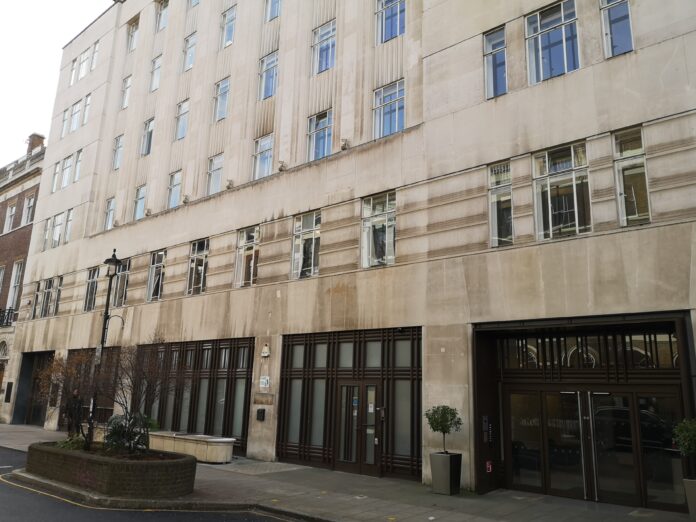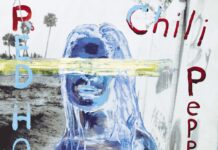Right across from Bond Street Underground Station in London’s Marylebone area lies the old Polydor Studios, more specifically at 17-19 Stratford Place. This location appeals to me greatly for three geeky reasons, those being that Pink Floyd rehearsed at the studio briefly back in 1967 and that The Jam and The Kinks recorded some brilliant stuff here in 1977 in the case of the former and late 1968 in the case of the latter. Wait a minute! Did I say three reasons? Make that four! Punk legends The Clash also laid down some rough demo tracks at the label’s in-house studio in late 1976, which eventually saw the light of day (officially, that is) in 2013 when they were included in the lavish Sound System box set.
While we can probably all agree that this long-gone studio is hardly as exotic or steeped in legend as those of Abbey Road Studios, Trident Studios, Olympic Studios, De Lane Lea Studios, or Morgan Studios are, it does however deserve to be mentioned in these pages of ours as it is more than just a mere footnote in British music history from the perspective of this scribe. Perhaps the most pivotal and pioneering piece of work to have been captured for posterity at this address is the riveting LP titled In the City by The Jam – an album brimming with energy, youthful vigor, and irresistible hooks. What exactly were The Jam, musically and stylistically speaking? It was punk rock of a sort but unlike anything else deemed punk at the time. The Jam, which consisted of Rick Buckler, Paul Weller, and Bruce Foxton, churned out tunes that were snappy and concise without being devoid of nuances. They were different in the best possible sense of the word. The Jam was also a hard-working group that came up through the trenches of the bustling UK underground scene, played numerous gigs and cultivated a loyal and dedicated fan base, and eventually showed up on the radar of various record labels, one of which was Polydor Records who went on to release the aforementioned In the City LP. As drummer Rick Buckler recalled in his autobiography:
Polydor booked us into its in-house recording studio, which was in Stratford Place, just off Oxford Street . . . The actual recording was easy because we already had some recording experience and were well rehearsed. We played the songs live and then did overdubs. As a team we worked quickly. We were used to that too, because we understood that recording sessions cost a lot of money. (59)
Rick Buckler – The Jam
The address obviously holds a lot of meaning to the drummer and is also relevant in a more overall context relating to the history of the band in that a debut album is a rather pivotal event to any ensemble of aspiring and inspired musicians, and when you are standing outside the relatively inconspicuous building nowadays, it is amazing to think than one of the most revered and much-loved albums of all time was captured for posterity on the other side of that wall.
Another magnificent little gem that came about in the studio was the ‘Hold My Hand’ single by Dave Davies of the Kinks, which was released by Pye Records in January 1969. Davies and his Kinks bandmates did some recordings in late December 1968 at Stratford Place with the catchy ‘Hold My Hand’ and the B-side titled ‘Creepin’ Jean’ being the result of those endeavours, but if you get your hands on the expanded deluxe edition of The Kinks Are the Village Green Preservation Society, you will notice that it includes a version of ‘Creepin’ Jean’ from the aforementioned 1968 session.
The fierce-sounding punk rockers Chelsea laid down the tracks for their ‘Right to Work’ vinyl single here in 1977, and none other than the iconic past-punkers Siouxsie and the Banshees immortalised parts of their post-punk/new wave masterpiece titled Kaleidoscope within the confines of Polydor Studios in 1980. Let us not forget that Arthur Brown’s Kingdom Come wielded their psychedelic rock wizardry at this very address in September 1972, and there is a rumor that the iconic Jimi Hendrix dropped in on an Eire Apparent recording session and added a few licks or overdubs to a tune sporting the moniker “Rock ‘n’ Roll Band” in early January 1969.
The next time you find yourself in the vicinity of Bond Street and 17-19 Stratford Place, take a closer look at the former recording facility while reflecting on just how many noteworthy and much-loved songs were conceived and brought to life inside that very building. I only wish that the Pink Floyd rehearsals at Polydor Studios were committed to tape back then. What a marvelous musical document that would have been. One can dream, right?
Works cited:
Buckler, Rick. That’s Entertainment: My Life in The Jam. Omnibus Press, 2015.
https://www.jimihendrix.com/encyclopedia-tag/polydor-studios
https://www.kindakinks.net/discography/showrelease.php?
release=484https://www.discogs.com/ko/label/266658-Polydor-Studios?page=1


















